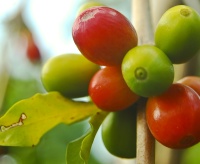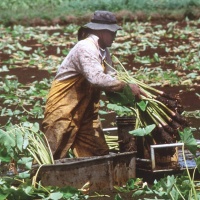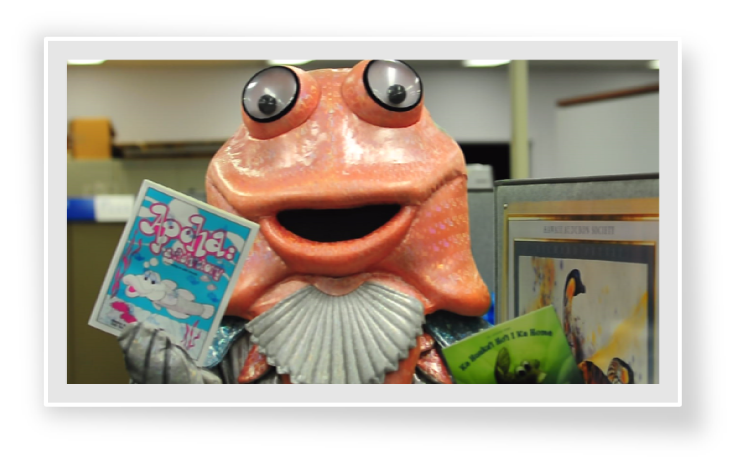Agriculture and Polluted Runoff

Coffee arrived in Hawaiʻi in the early 1800s, and by the early 1900s it was grown on all of the major Hawaiian islands. Hawaiʻi has roughly 6,500 acres of coffee statewide. Hawaiʻi Coffee Association
NRCS in Hawaiʻi
The Natural Resources Conservation Service (NRCS) provides conservation grants and technical advice to private landowners. Their main goal is to protect, enhance and preserve soil, water, air, plants and animals using sound science and expertise. NRCS has offices located throughout the Hawaiian Islands.
For an example of how a farmer can benefit from a NRCS partnership, view the video “Hawaiʻi Farmer Cuts Chemicals” that describes how Wei Chong Ho was able to reduce his use of chemicals on his Oahu farm. The story of the Ho’s success can also be found in the NRCS Success Stories.
Technical documents related to animal waste management, comprehensive nutrient management plans, pests, water quality and more can be found on the NRCS Pacific Islands Area Technical Resources site.
Hawaiʻi, with its year-round growing season, supports a variety of agricultural products. Long known for sugarcane and pineapple, Hawaiʻi’s farm economy is in transition to a much more diversified product mix with many smaller operations. Hawaiʻi now leads the nation in sales of several tropical commodities.
With the great opportunities that Hawaiʻi has to offer its farmers, it also brings a responsibility to protect Hawaiʻi’s water resources. EPA’s Agriculture Strategic Plan for the Pacific Southwest Region notes that agriculture is the nation’s leading source of pollution for ground, surface and coastal waters. Livestock and crop farming practices can contribute pollutants such as sediments, nutrients from fertilizers and animal waste, pesticides, herbicides, and bacteria from animal waste to local waterways. By choosing sustainable farming practices, farmers can reduce the amount of polluted runoff from their farms. Several examples of sustainable farming practices are described below.
Develop a Conservation Plan
Working with local Soil and Water Conservation Districts (SWCDs), farmers and ranchers can develop a unique plan for their property that will improve water efficiency, decrease erosion and minimize their environmental impact. A conservation plan addresses pollutants in farm runoff with nutrient and pest management strategies. Conservation cover and mulching recommendations address the quantity of farm runoff. Conservation plans also provide information about soils and nearby streams, aquifers, ditches and other water resources. To find the SWCD in your area, visit the Hawaiʻi Association of Conservation Districts web site.
Conserve and Protect Water Resources
It is important for farmers to adopt practices that will keep rain and irrigation water on their property to prevent polluted runoff from entering nearby streams and rivers. These practices will protect local waterbodies and also prove helpful during times of drought and water shortages. Farmers can conserve water resources by using water more efficiently, improving on-farm retention of water, reducing water demand, and increasing soil content and soil moisture.
For livestock farmers, it is important to have access to an adequate supply of water that is clean enough to support healthy animals. Livestock farmers need to be careful that animal wastes do not contaminate drinking water sources for livestock and wildlife. The Department of Health has guidelines for management of livestock waste.
Properly Apply and Time the Application of Fertilizers, Pesticides and Herbicides

Taro farming
Fertilizers, herbicides and pesticides are often applied to improve production, but when applied improperly, these nutrients and chemicals often enter our waterways. Before fertilizers are applied, a soil test should be administered to determine exactly which, if any, fertilizers should be applied. Hawaiʻi’s Cooperative Extension Service provides information on how to conduct a soil test in its paper “Testing Your Soil: Why and How to Take a Soil-Test Sample.” Fertilizers should be used sparingly and applied when rain is not in the immediate forecast. Organic fertilizers are also known to release nutrients more slowly, allowing a longer treatment of the soil.
Pesticides are chemicals that are intended to kill or repel a pest such as unwanted insects, weeds, rats, germs and fungus. It is important to properly use and dispose of pesticides in order to keep these harmful chemicals out of Hawaiʻi’s waterways. All pesticides should be carefully applied per the label’s instructions. Old and unused pesticides require special disposal and should not be thrown out in the trash or poured down the drain. To learn where pesticides can be properly disposed of, visit the Hawaiʻi Department of Agriculture site. The Hawaiʻi Department of Agriculture’s Plant Pest Control Branch also provides updates of the latest pests that are affecting Hawaiʻi.
Protect Soil Resources: Plant Cover Crops
Exposed soil can be easily washed away by rain and irrigation water into nearby waterbodies. Sediment clouds the waters and aquatic animals (including corals) can be smothered. It is important to keep soil on the land and out of waterways. After harvesting, cover crops should be planted. Range and grazing lands should also be planted year-round. The University of Hawaiʻi (UH) Cooperative Extension has resources on cover crops available on their website.
Agricultural Resources
- Hawaiʻi Department of Agriculture: Pesticides
- NRCS Pacific Islands Area Technical Resources
- EPA: Nonpoint Source Pollution from Agriculture
- Hawaiʻi Association of Conservation Districts (HACD)
- UH College of Tropical Agriculture and Human Resources (CTAHR) Cooperative Extension
- Hawaiʻi Water Quality Extension Program
- Natural Resources Conservation Service (NRCS) Pacific Islands Area
- Hawaiʻi Livestock Waste Management Guidelines
